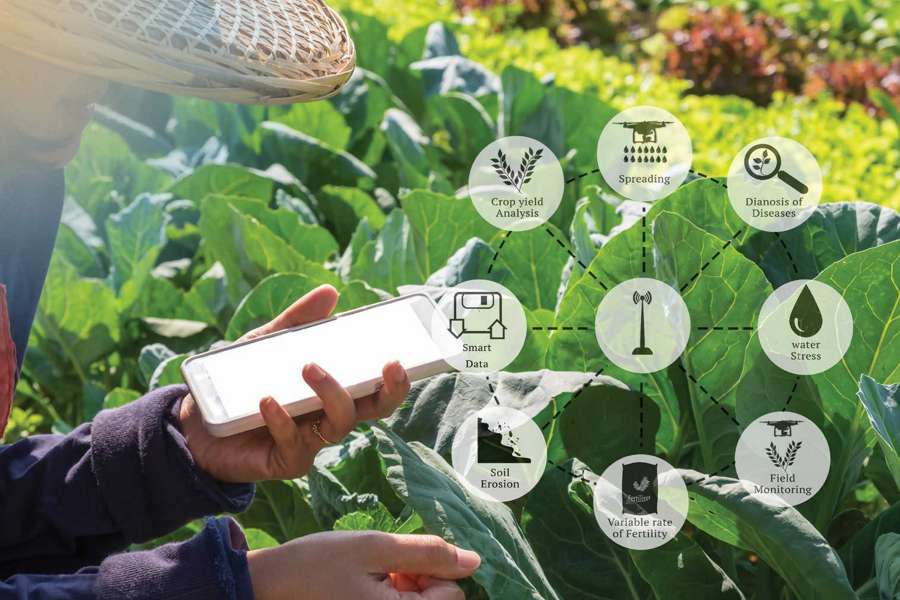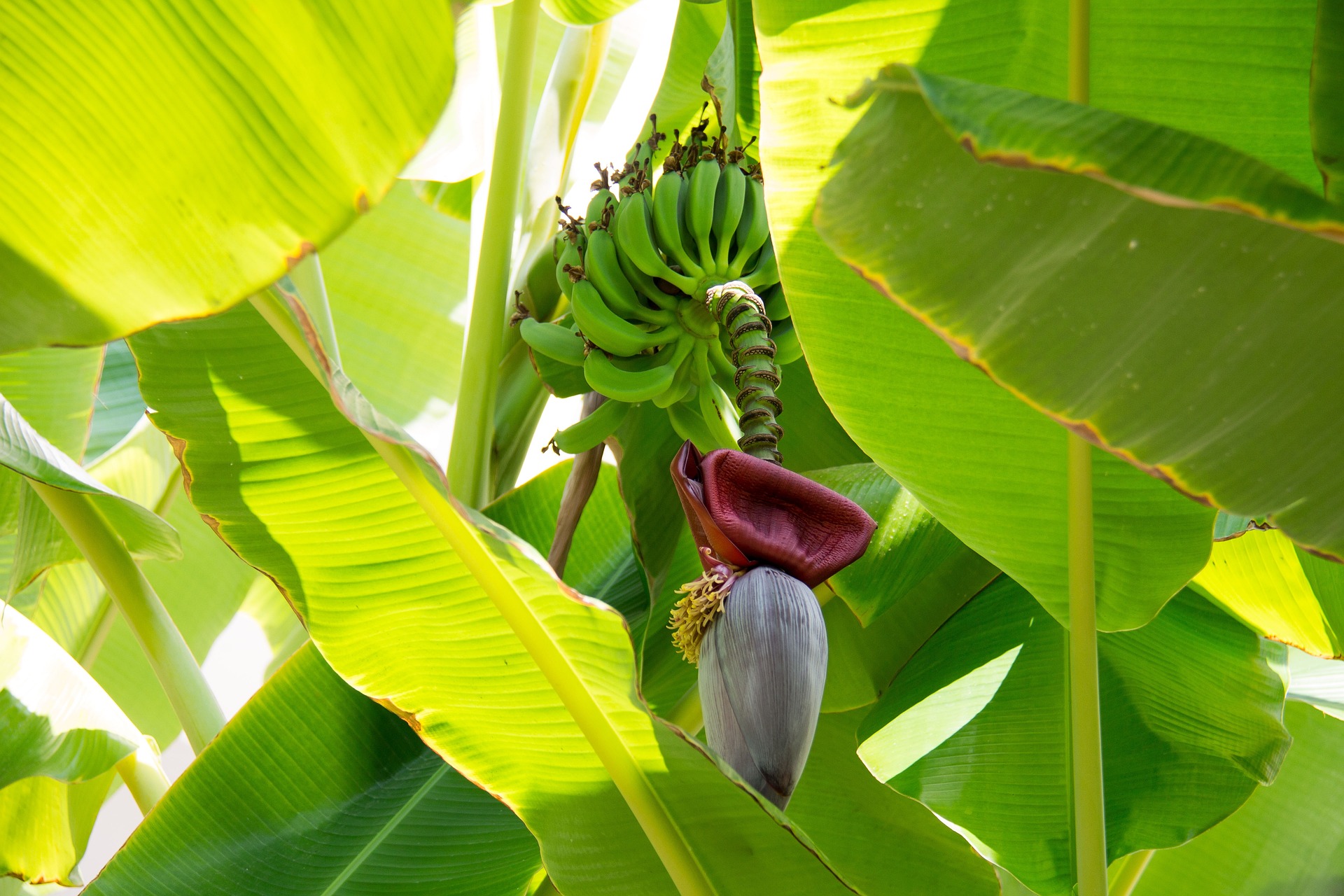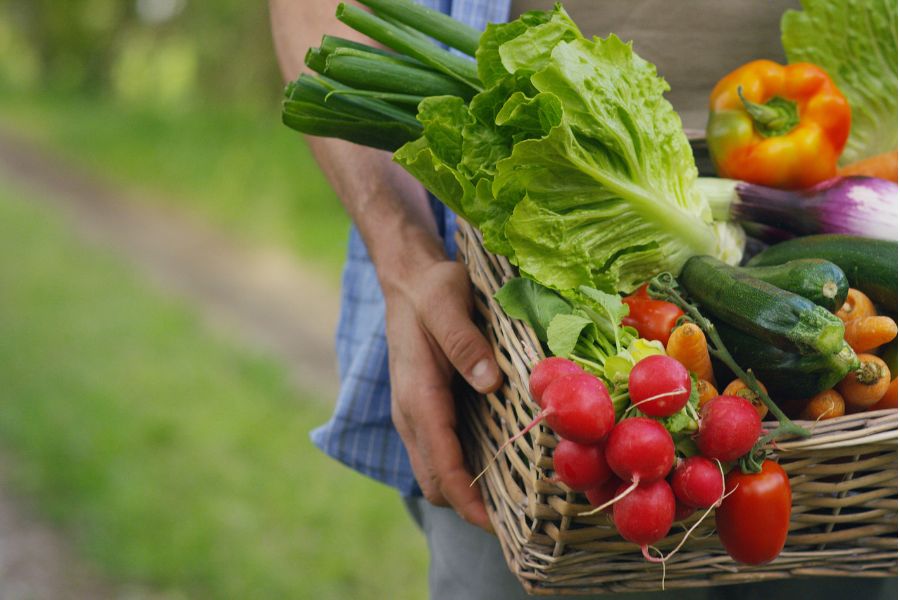Digital agriculture: Taking the guesswork out of farming
Digital agriculture is acclaimed as a viable solution to ensure that rural agrarian communities secure their livelihoods. However, it should be seen as a supplement to other interventions like investment in infrastructure, and not a substitute.
- Indian agriculture has been the backbone of Indian economy, generating millions of jobs in the country. However, the sector’s contribution to India’s GVA is pretty minimal – at just 16%.
- The sector is plagued by perennial problems like pest infestation, dismal soil quality, inferior seeds, over-reliance on rain, poor storage & low yield per hectare.
- Digital agriculture – where farmers use digital technologies to access useful information – is acclaimed as a viable solution to resolve this concern and ensure that rural agrarian communities secure their livelihoods.
- However, the technology has its share of bottlenecks like data privacy and inequitable access which need to be resolved. At the same time, it should be seen as a supplement to other interventions like investment in infrastructure, and not a substitute.

Agriculture has been the backbone of Indian economy. The recent PLFS survey conducted by National Sample Survey Office (NSSO) reveals that it constitutes 44% of the overall employment and contributes only 16% of Gross Value Added (GVA). However, as the country’s population rises, the stress on the sector will expand since it implies that there will be more mouths to feed with the same or lower arable land and unpredictable weather patterns due to climate change.
Further, the sector has been plagued by complications such as pest infestation, dismal soil quality, inferior seeds, over-reliance on rain, poor storage and scale issues. These result in post harvest losses, thereby creating a vicious cycle of debt and poverty under which farmers are reeling, thereby making agriculture extremely untenable.
Digitizing agriculture is widely acclaimed as the way to resolve this concern. According to the World Economic Forum, digital agriculture entails farmers using smartphones and other digital technologies to access customized, actionable agricultural information in real time. It incorporates a wide variety of technology and software systems that generate data to enhance decision making in precision farming.
The WEF cites research which suggests that farmers who received digitally delivered information were 22% more likely to adopt the recommended agrochemical inputs, yielding US$ 10 in benefits for every US$ 1 spent. Thus, such useful knowledge has the power to potentially revolutionize how these communities secure and improve their livelihoods.
Taking the guesswork out of farming
For a farmer to be successful, he must grow as much crops per acre as he can, reduce the risk of crop failure, minimize operating costs, and sell crops at the best price possible. Among other things, this would need shedding reliance on the whims and fancies of erratic weather, effectively managing input resources like fertilizers, water and seed quality and minimizing the impact of unpredictable variables like pests.
Traditional methods like physical crop inspection are time-consuming and can be inaccurate in managing these challenges. In this kind of a situation, the best alternative is digital agriculture. If used properly, digital agriculture tools can help reduce waste, increase profits and protect the environment. One of the key advantages of using digital agriculture tools is that farmers can determine peak conditions for plant growth and what nutrients their crops need to help them enhance their yields. By allowing a farmer to improve the overall crop health and increase yields, this technology helps them increase their income.
IBM developed a smart solution for the purpose, called Watson Decision Platform for Agriculture. This crunches large, complex data and creates insights quickly and easily, so that farmers and food companies can focus on growing crops for global communities. Consequently, it has an array of benefits.
“Watson Decision Platform for Agriculture could help a livestock company eliminate a certain mold or fungus from feed supply grains or help identify the best crop irrigation practices for farmers to use in drought-stricken areas like California. It could help deliver the perfect French fry for a fast food chain that needs longer – not fatter – potatoes from its network of growers. Or it could help a beer distributor produce a more affordable premium beer by growing higher quality barley that meets the standard required to become malting barley.”
Microsoft in collaboration with ICRISAT, developed an AI Sowing App, which is being used by Indian farmers to enhance crop yields. Powered by Microsoft Cortana Intelligence Suite including Machine Learning and Power BI, the app sends sowing advisories to participating farmers on the optimal date to sow. These encompass the optimal sowing date, soil test-based fertilizer application, farm yard manure application, seed treatment, optimum suggestions related to sowing depth and more. The beauty of this app is that farmers don’t need to install any sensors in their fields or incur any capital expenditure; all they need is a feature phone capable of receiving text messages.
Removing the guesswork from farming, Microsoft collaborated with United Phosphorous (UPL), India’s largest producer of agrochemicals, to create Pest Risk Prediction API. Leveraging AI and machine learning, the platform indicates in advance the risk of pest attack, based on weather conditions and crop stage in addition to the sowing advisories. Given the Indian context of small farmers who lack the requisite resources for updated technologies and market information, these solutions could prove extremely fruitful.
Digital technology is not a panacea
While digital technologies have many potential advantages, they also present risks that will need to be alleviated. According to the World Bank, one of the main issues with pan-Indian adoption of digital agriculture is that uneven connectivity and broadband infrastructure lead to unequal opportunity. Hence, the benefits may accrue disproportionately to those farmers who are favourably positioned to take advantage of such opportunities.
Another issue with digital agriculture pertains to data privacy. The question who owns and uses digital information acquired by these technologies becomes crucial. The possibility of making the data available to third parties for their vested interests is another threat that this technology entails. This is particularly true for India which still does not have a concrete data protection law.
Thirdly, farmers may also need advice that is tailored to their individual needs, as well as access to agricultural inputs (fertilisers and seeds) and markets to sell their products. What adds to the complexity of this situation is that digital agricultural technologies are affected by economies of scale. To put it simply, it is easier for users who can implement them at large scale to embrace this technology. However, according to the agricultural census, small and marginal holdings (below two hectares) constituted 86.21% of the total land holdings in India.
Thus, it is clear that while digital agriculture has a huge advantage of establishing a regime of predictability in agriculture and thereby enhancing farm output and farmers’ incomes, it has its own share of challenges. At the same time, investment in digital technology should not be seen as a substitute to other investments in agriculture. These include spending on better infrastructure, improving connectivity, building better warehouses and storage facilities, improving access of farmers to better financial facilities and enhancing digital literacy.













Leave a comment